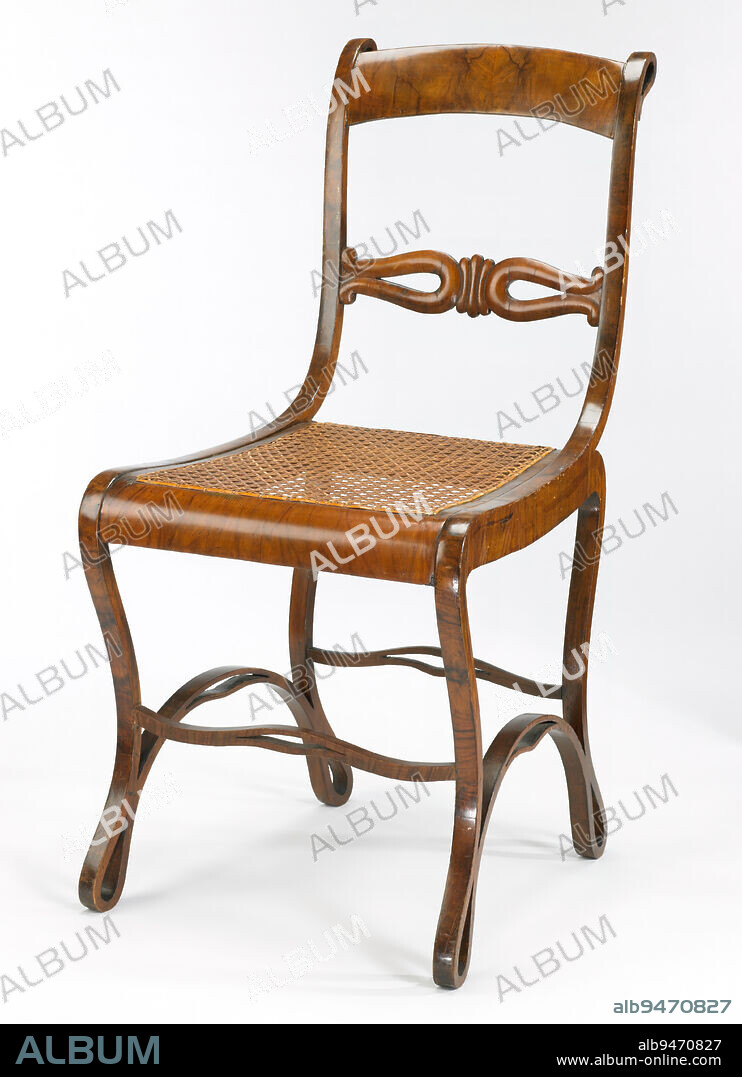alb9470827
Boppard chair, c. 1836-1840, Michael Thonet, German (Prussian), German (Prussian), 1796-1871, 33 1/4 x 16 7/8 x 19 in. (84.46 x 42.86 x 48.26 cm), Bent and laminated wood, walnut veneer, cane, Germany (Prussia), 19th century, Indelibly identified as classics of modern design, the remarkable bentwood furnishings of Gebrüder Thonet continue to turn heads more than a century later. The history of bentwood furniture dates back centuries, but it was Michael Thonet, an enterprising cabinetmaker from Boppard-am-Rein in Germany, who propelled the notion of steam-bending woods (and subsequently, tubular metal) into the 20th century, representing a significant passage from craft to industrial production.

|
Ajouter à une autre Lightbox |
|
Ajouter à une autre Lightbox |



Avez-vous déjà un compte? S'identifier
Vous n'avez pas de compte ? S'inscrire
Acheter cette image

Légende:
Voir la traduction automatique
Boppard chair, c. 1836-1840, Michael Thonet, German (Prussian), German (Prussian), 1796-1871, 33 1/4 x 16 7/8 x 19 in. (84.46 x 42.86 x 48.26 cm), Bent and laminated wood, walnut veneer, cane, Germany (Prussia), 19th century, Indelibly identified as classics of modern design, the remarkable bentwood furnishings of Gebrüder Thonet continue to turn heads more than a century later. The history of bentwood furniture dates back centuries, but it was Michael Thonet, an enterprising cabinetmaker from Boppard-am-Rein in Germany, who propelled the notion of steam-bending woods (and subsequently, tubular metal) into the 20th century, representing a significant passage from craft to industrial production.
Personnalités:
Crédit:
Album / quintlox
Autorisations:
Modèle: Non - Propriété: Non
Questions sur les droits?
Questions sur les droits?
Taille de l'image:
3884 x 5360 px | 59.6 MB
Taille d'impression:
32.9 x 45.4 cm | 12.9 x 17.9 in (300 dpi)
Mots clés:
ALLEMAGNE • ALLEMAND • ALLEMANDE • BAGUETTE • BARRE • BARREAU • BATON • BATONS DES PELERINS • CANE • CANNE • ÉQUIPES • HISOIRE • HISTOIRE • MICHAEL THONET • PRUSSIEN • XIXE SIÈCLE • XXE SIECLE
 Pinterest
Pinterest Twitter
Twitter Facebook
Facebook Copier le lien
Copier le lien Email
Email
